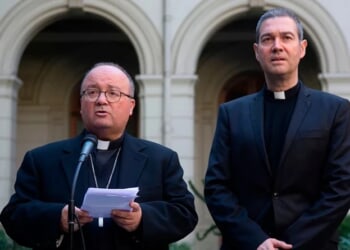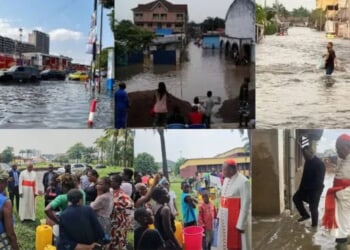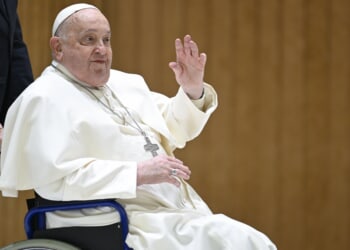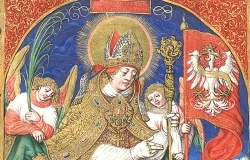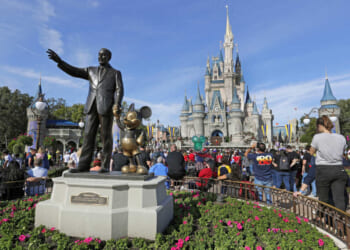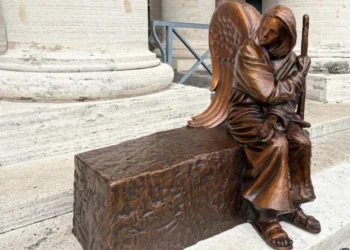Vatican City, Apr 21, 2025 /
13:48 pm
The Catholic Church has many historical customs and traditions related to the handling of a pope’s mortal remains between the time of his death and his burial.
Some of these customs have fallen out of use — such as hitting the pope three times with a hammer to confirm his death — or been removed over time through various papal reforms.
Most recently, Pope Francis made several changes to the funeral process in a second edition of the 1998 Ordo Exsequiarum Romani Pontificis, the Church’s liturgical book for the funeral rites of popes.
According to the master of papal ceremonies, Archbishop Diego Ravelli, the new edition of the liturgical book, issued in 2024, was requested by Pope Francis from a desire “to simplify and adapt some rites so that the celebration of the funeral of the bishop of Rome better expresses the Church’s faith in the risen Christ, eternal Shepherd.”
In the Ordo Exsequiarum Romani Pontificis, the process is divided into three steps, called “stations.”
Here is what has happened and will happen to Pope Francis’ mortal remains prior to his burial.
First station
After the death of the pope, the director of the Vatican’s health services — currently Dr. Andrea Arcangeli — examines the body and prepares the certificate of death. He also arranges for the proper preservation of the corpse so that its public exposition can be carried out “with the greatest decorum and respect.”
The remains of the deceased pope are then dressed in the white cassock and moved to the private papal chapel for the “rite of the ascertainment of death and deposition in the coffin,” presided over by the camerlengo, currently Cardinal Kevin Farrell.
Following the prayers, the pope’s body — dressed in red liturgical vestments with the miter and pallium — are placed in a simple wooden coffin with a zinc lining, rather than an elevated bier, the so called cataletto (death bed), as was used for Pope John Paul II and Pope Benedict XVI.
The paschal, or Easter, candle is placed nearby and lit for the next part of the rite, which includes sprinkling holy water on the body. The casket with the pope’s remains is placed in a suitable place within the Vatican for visitation and prayer until it is moved for public viewing.
Second station
The second step is the translation or transporting of the coffin in solemn procession to St. Peter’s Basilica, where it is placed close to the basilica’s main altar, the Altar of the Confession, with the paschal candle nearby, in order that the public may view the body, pray, and say goodbye.
The evening or another time before the funeral, the coffin is closed in a special rite. Prior to closing the casket, a white silk veil is placed over the deceased pope’s face. A bag of the coins minted during his pontificate and one of two copies of a “rogito,” a document summarizing the life and works of the pope, are also placed in the coffin.
The interior coffin of zinc is closed and sealed first and then the outer wooden coffin is also closed and sealed.
The funeral, called the “Missa poenitentialis,” is celebrated in St. Peter’s Square and marks the first of the “novendiales,” nine consecutive days of mourning for the pope.
(Story continues below)
Subscribe to our daily newsletter
Third station
The casket with funeral pall is next brought to the place of burial, most commonly the crypt of St. Peter’s Basilica, where it has been the custom for popes to be buried for over a century.
Pope Francis, however, will be interred in the Basilica of St. Mary Major at his request, because of his strong devotion to Mary.
The last pope to be buried outside of the Vatican was Pope Leo XIII, who was buried in the Archbasilica of St. John Lateran in 1903.
Seven popes in history have been buried in the Basilica of St. Mary Major, the last in 1669, Pope Clement IX.




